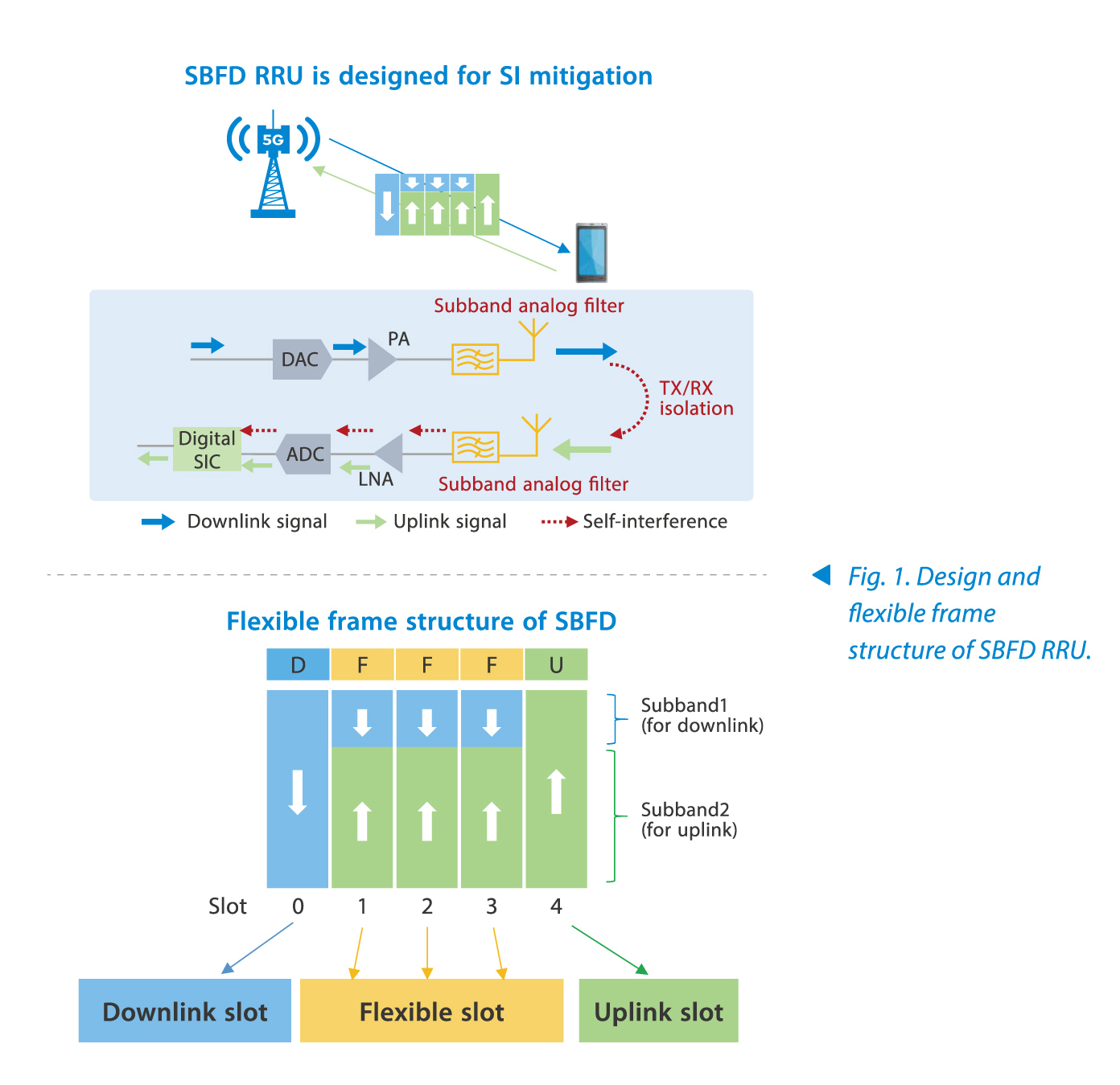Enhancing Spectrum Flexibility with Subband Full Duplex
Delivering enhanced mobile broadband experiences to consumers and extending 5G's reach into new use cases are continuously urging breakthroughs in 5G for higher flexibility and efficiency on limited radio spectrum.
FDD and TDD Have Their Own Advantages and Limitations
Frequency division duplex (FDD) and time division duplex (TDD) are widely used in 2G, 3G and 4G networks. In FDD mode, the frequency domain resource is divided for downlink and uplink. With continuous time domain resources, FDD is characterized by lower latency, lower throughput and scattered spectrum bands. In TDD mode, the time domain resource is split between downlink and uplink, which leads to higher latency. The fixed allocation of time/frequency resources of TDD/FDD has both advantages and limitations.
As a promising enhancement to the limitations of conventional duplex operation, full duplex (FD) is introduced to improve spectrum efficiency and flexibility. It is also known as single-frequency full-duplex by allowing both downlink and uplink to exist on the same spectrum frequency, which can theoretically double the spectrum efficiency.
5G-Advanced Lists SBFD as a Key Enabler of Full Duplex
Though FD is a new technology to improve spectrum efficiency, simultaneous transmission on downlink and uplink will bring severe interference that may lead to design complexity of gNBs and UEs and increase the cost. Therefore, in the early stage of 5G-Advacned, the focus will be on subband full duplex (SBFD), and then gradually extended to FD networks applicable to gNBs and UEs.
Subband full duplex or subband non-overlapping full duplex is considered as a promising enhancement to the conventional limitations for it allows gNBs to transmit and receive on non-overlapping subbands at the same time. Half duplex operation is implemented at UEs, so gNBs can allocate resources for different UEs to meet different service requirements and enhance the flexibility in spectrum utilization.
Full duplex operation is a significantly different duplex mode from FDD or TDD. Subband full duplex enhancement is a fundamental change in the way the NR air interface operates. It can provide 5G services for different users on demand to meet the medium- and long-term deployment needs of operators.
ZTE Keeps Exploring Full Duplex Techniques to Achieve Breakthroughs in SBFD
ZTE and China Mobile have joined hands to explore full-duplex techniques. They made a breakthrough in SBFD and completed the IOT test in Xi'an Joint Innovation Laboratory.
- Industry's First SBFD RRU with Excellent Self-Interference Mitigation Performance
Because gNB can transmit and receive simultaneously on the same carrier, the signals transmitted by gNB may leak directly to its receiver, resulting in blocking the radio unit. This is called self-interference. Therefore, one of the biggest challenges of full duplex operation is to mitigate self-interference.
ZTE has launched the industry's first SBFD RRU with enhanced transceiver architecture that integrates spatial isolation, subband analog filter, and digital interference cancellation techniques. The self-interference signal up to 130 dB can be mitigated, which enables the uplink signal to be optimally received at the gNB receiver.
- Flexible Frame Structure Compatible with 5G Legacy UEs for 5G-A Applications
ZTE has designed the flexible frame structure for SBFD in order to be compatible with 5G legacy UEs. The period of 2.5 ms includes five time slots. The first time slot is kept as "Downlink slot" to ensure the broadcast of system information, the last time slot is fixed as "Uplink slot" to ensure normal access of UEs, and the remaining three time slots are set as "Flexible slot" to serve different UEs with flexible UL and DL transmission (Fig. 1). In the initial stage, subband for uplink adopts the UL-dominated time-frequency resource partitioning manner to enhance uplink throughput.

The interoperability test with Qualcomm shows that commercial UEs powered by Qualcomm's Snapdragon® X65 5G Modem can operate normally in SBFD cells, which includes identifying the flexible frame structure, accessing the system properly, and implementing large uplink services and low-latency services.
- Cross-Subband and UE-Level Scheduling for Higher UL Throughput and Lower End-to-End Latency
Based on the flexible frame structure, gNB can flexibly schedule the DL/UL resources as required. For high-bandwidth UL services, the radio resources in Flexible slot and Uplink slot can all be scheduled. For low-latency services, with DL/UL resources available in every slot, the DL or UL latency can be lowered to about 1 ms. In addition, gNB can also meet the needs of both large UL capacity and low latency through the cross-subband scheduling.
ZTE SBFD system has achieved an uplink throughput of over 1.4 Gbps for a single carrier while reducing the end-to-end latency to 4 ms, reaching the best level in the industry.
SBFD Evolves to Bring New Value in 5G Commercialization
SBFD is a key enabler of full duplex air interfaces. In 3GPP Rel-18, SBFD is listed as the main research direction to further enhance 5G mobile broadband and expand use cases. As the evolution to 5G-Advanced accelerates, ZTE will continue to promote innovation and create new growth opportunities in the consumer and enterprise markets.